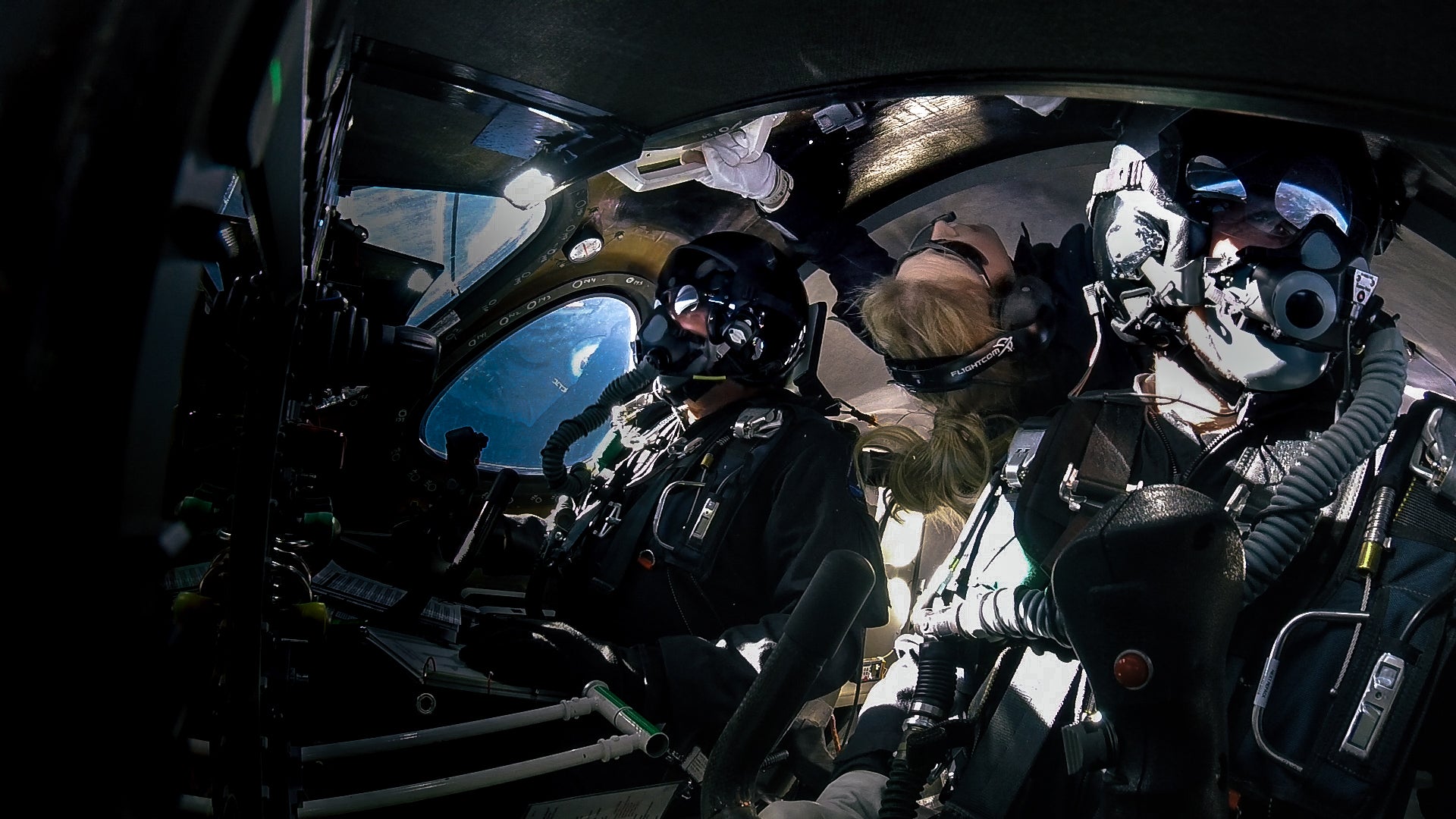Virgin Galactic flew paying passengers to space. Does it matter?
The first commercial flight for the Richard Branson-founded company may have come too late

It took 19 years, but Virgin Galactic has flown a paying customer. Three of them, in fact.
Suggested Reading
The VSS Unity rocket plane was launched from its carrier aircraft and took three members of the Italian Air Force, along with two Virgin Galactic pilots and the company’s head of astronaut training, on a flight that peaked 53 miles (85.1 km) above the planet. The passengers and their scientific payloads experienced a few moments of microgravity before gliding back to the planet below.
Related Content
Virgin’s vehicle first reached space in 2018, and flew founder Richard Branson for the first time in 2021. Now, the company says it will begin monthly commercial service in August, working its way through a backlog of passengers and payloads that have purchased seats since the company’s founding in 2004.
Whether that will be enough to keep the company in business will depend on stock market sentiment and whether or not its engineers are able to produce, test, and deploy a set of new spaceplanes by 2026.
Virgin Galactic has passengers to fly and rocket planes to build
Virgin says it has sold 800 tickets that represent $211 million in potential revenue; if it flies VSS Unity monthly at maximum capacity of four passengers, it would take nearly seventeen years to clear its manifest. That’s just not sustainable at the company’s current spending rate. Even when it is able to get a second spacecraft, VSS Imagine, flying, it won’t be enough.
When Virgin Galactic went public through a landmark SPAC transaction in 2020, the company expected it would have flown more than 3,000 paying passengers by the end of this year.
To close its business case, Virgin Galactic’s management is betting it can build a new series of rocket planes, called the Delta class, and have them flying by 2026. That’s not going to be simple; the company hasn’t disclosed the cost of the project, but its capital needs are voracious. The company had more than $800 million in cash and securities on its balance sheet at the end of March, but since then has sold $300 million of new stock and made plans to sell a further $400 million.
That suggests the company will need north of $1 billion to develop and manufacture its new rocket planes while flying its existing fleet on a regular basis. Virgin Galactic has already spent $2 billion building the company to this point.
Virgin Galactic’s first-mover advantage
In Virgin Galactic’s favor, there is clearly demand for its services, even at at $450,000 for a single-person flight. There is little competition in the field—only Jeff Bezos’ Blue Origin, which flies its own suborbital tourist rocket called New Shepard. After an anomaly last year, the New Shepard has been grounded, though Blue Origin CEO Bob Smith suggested it would fly again this year.
Virgin Galactic, led by a former Disney theme parks executive, has a vision of expanding service to multiple spaceports. Backed by sovereign wealth funds in the Middle East, the company has aspirations of launching deep-pocketed tourists in that corner of the world.
First, the company will need to prove it can design and build vehicles to populate those new spaceports and fly those customers. The VSS Unity design, with an unusual hybrid motor and rotating wings, has been criticized by aerospace engineers outside the company. It’s not clear how effectively it can be adapted into a more reliable and frequent-flying vehicle.
Even though Virgin Galactic’s first commercial flight and the beginning of regular service is a major step forward, the company will also be stepping backward to where it was just a few years ago—trying to build a rocket that can realize its business plan.